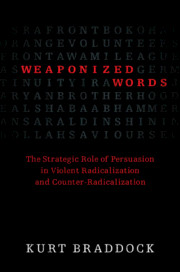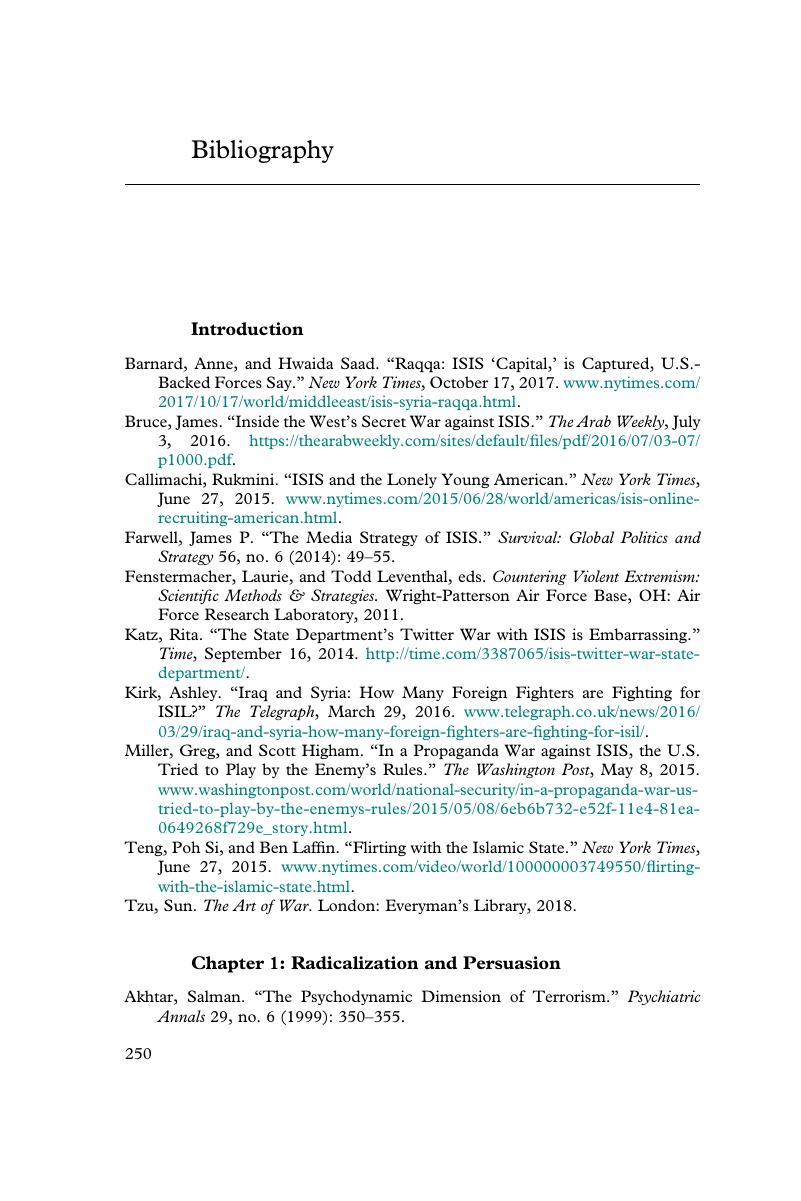 Weaponized Words
Weaponized Words Bibliography
Published online by Cambridge University Press: 31 March 2020
Summary

- Type
- Chapter
- Information
- Weaponized WordsThe Strategic Role of Persuasion in Violent Radicalization and Counter-Radicalization, pp. 250 - 285Publisher: Cambridge University PressPrint publication year: 2020


